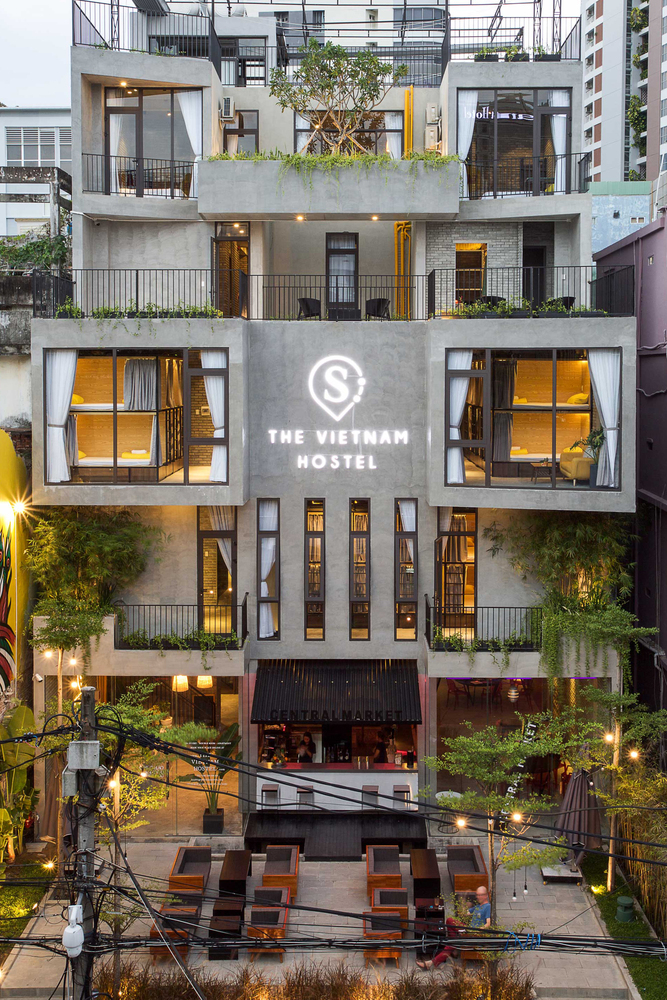Sea Glass House The Manser Practice Architects + Designers
2014-11-15 01:00
架构师提供的文本描述。客户简介的是他们的周末和度假屋,这是一座1960年的简约平房,将被扩大,提供更多的居住环境,并增强北面和西面的海景。保持该网站的私人/秘密性质也是一项要求。
Text description provided by the architects. The Clients brief was for their weekend and holiday house, a compact 1960’s bungalow, to be enlarged, giving more living accommodation and enhancing the views of the sea to the north and west. Maintaining the private/secret nature of the site was also a requirement.
一项初步建议,简单地增加一个玻璃展馆客厅现有的房子,似乎满足了简要。保持房子的单层,使建筑物足够低,不能看到附近的房屋,但增加新的空间,在现有的房子以北的主要居住空间,在一个位置上,一个更威严的俯瞰森林下面的索伦特以外。
An initial proposal to simply add a glass pavilion living room to the existing house appeared to fulfil the brief. Keeping the house single storey kept the building low enough not to have a view of nearby houses but adding the new space to the north of the existing house located the main living space in a position with a more commanding view over the woods below to the Solent beyond.
然而,随着设计的发展,很明显,新扩建的大小和标准只会夸大现有房屋的狭窄和不合标准的性质。作出的决定是赞成全盘重建;维持最初建议的概念,但确保已完成的项目在质量上有连贯性和一致性。
As the design developed however it became obvious that the size and standard of the new extension would only serve to exaggerate the cramped and substandard nature of the existing house. A decision was taken in favour of wholesale redevelopment; maintaining the concept of the initial proposal but ensuring that the completed project had a coherence and consistency of quality.
这所房子是从一条通常是郊区和平淡无奇的道路沿着砾石车道穿过一片树林。房子的最初景色是故意不清楚的。一堵长长的弯弯曲曲、反光的黑墙坐落在树林中,遮住了房子和更远的地方。海景也只能用一瞥来暗示。
The house is approached from a generally suburban and unremarkable road down gravel drive through a wood. The initial view of the house is deliberately unclear. A long sinuous reflective black wall sitting amongst the trees conceals the presence of the house and beyond. Views of the sea are also only hinted at with glimpses.
从一个巨大的粗糙锯木门进入房子时,游客沿着一条宽阔的弧形走廊走来,沿着这条走廊,主要的居住空间、内外生活区和令人叹为观止的景致慢慢变得明显起来。客厅的完全和几乎没有结构的透明度被卧室街区的木材覆盖密度所抵消,这两个部分由房子东侧向北延伸的黑色屏风墙连接在一起。
On entering the house through a huge rough sawn timber door the visitor is lead along a broad sweeping curved corridor down which the main living space, the internal and external living areas and the stunning views beyond slowly become apparent. The utter and apparently almost structureless, transparency of the living area is offset by the timber clad density of the bedroom block the two sections being held together by the black screen wall running north south on the east side of the house.
卧室通常有角落的位置,微景内的物业,但主要的居住空间与梯田的北部和南部都有长期的看法,向北和西。
Bedrooms generally have corner locations with micro views within the property but the main living space with terraces both to the north and south has long views to the north and west.
重建而不是扩建,使整个房子的设计比现有财产更可持续。该建筑采用地面源热泵加热,运行于一系列40米的钻孔上。热泵还为游泳池提供热水和暖气,在夏季为地板提供冷却:-在此过程中补充钻孔。
Rebuilding rather than extending allowed the whole house to be designed in a more sustainable level than the existing property. The building is heated using a ground source heat pump running off a series of 40m bore holes. The heat pump also provides the hot water and heating to the swimming pool and in summer provides cooling to the floors: - replenishing the borehole in the process.
雨水是用来冲洗水龙头和外部水龙头的。太阳能热水取暖被考虑,但被拒绝,因为在一项仅间歇性使用的物业上存在操作问题。同样,风力涡轮机被拒绝的原因有很多,包括计划、风概况和偿还时间。
Rainwater is harvested for flushing WCs and for external taps. Solar heating for hot water was considered but rejected as there were operational problems on a property which in only used intermittently. Similarly a wind turbine was rejected for a number of reasons, including planning, wind profile, and pay back time.
主卧室块和所有外墙都是用280毫米厚的轻质粘土建造的,Honeycombe‘Zeigler’积木具有很高的绝缘层,而玻璃展馆有很深的悬垂,确保太阳能在冬季几个月中得到最大的利用,而在夏季则避免。黑暗的客厅地板也吸收太阳能增益,降低地板加热的负荷。
The main bedroom block and all external walls are constructed using 280mm thick lightweight clay honeycombe ‘Zeigler’ blocks giving very high levels of insulation whilst the glazed pavilion has deep overhangs ensuring that solar gain is used to best advantage during winter months but avoided during the summer. The dark living room floor also absorbs solar gain reducing the load in the underfloor heating.
Architects The Manser Practice Architects + Designers
 举报
举报
别默默的看了,快登录帮我评论一下吧!:)
注册
登录
更多评论
相关文章
-

描边风设计中,最容易犯的8种问题分析
2018年走过了四分之一,LOGO设计趋势也清晰了LOGO设计
-

描边风设计中,最容易犯的8种问题分析
2018年走过了四分之一,LOGO设计趋势也清晰了LOGO设计
-

描边风设计中,最容易犯的8种问题分析
2018年走过了四分之一,LOGO设计趋势也清晰了LOGO设计


































































